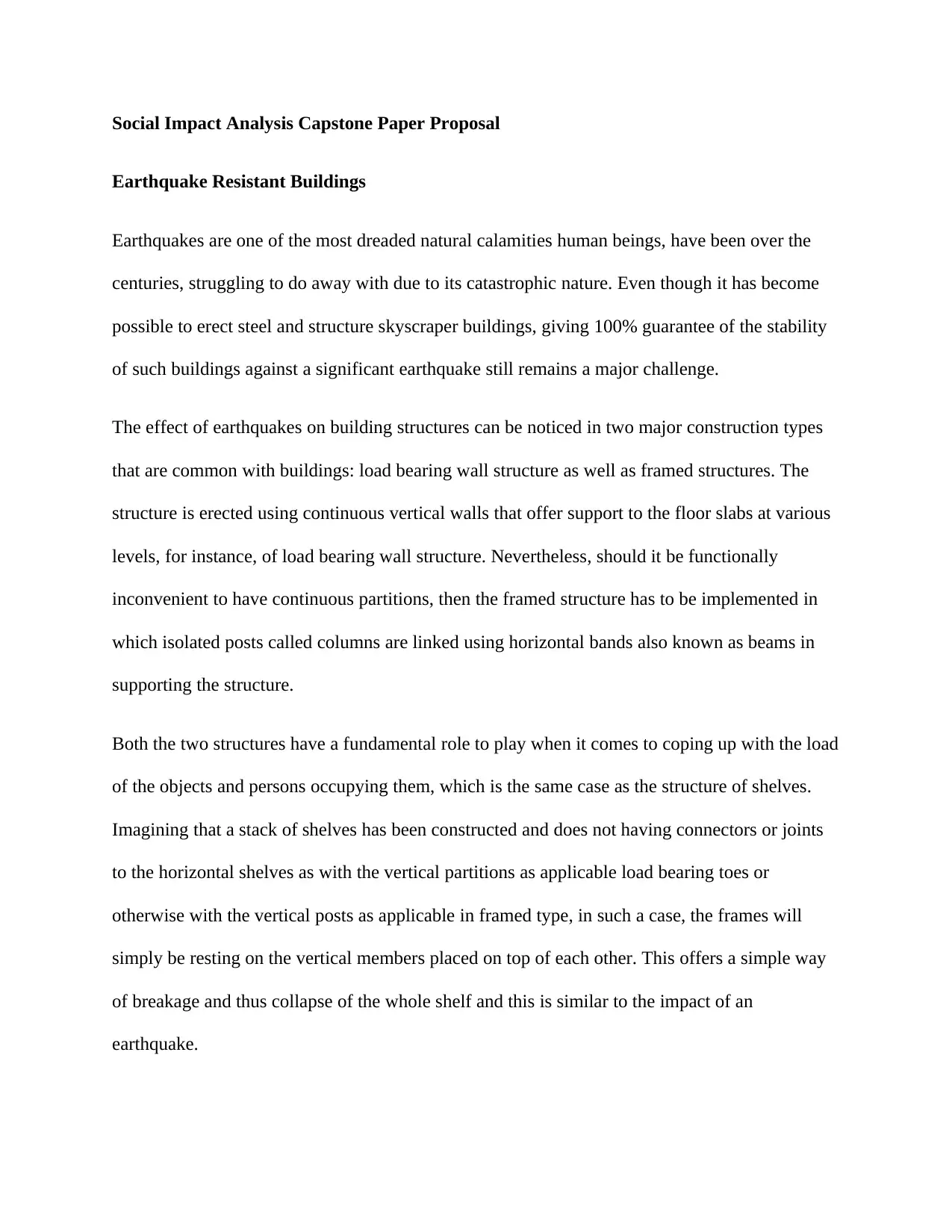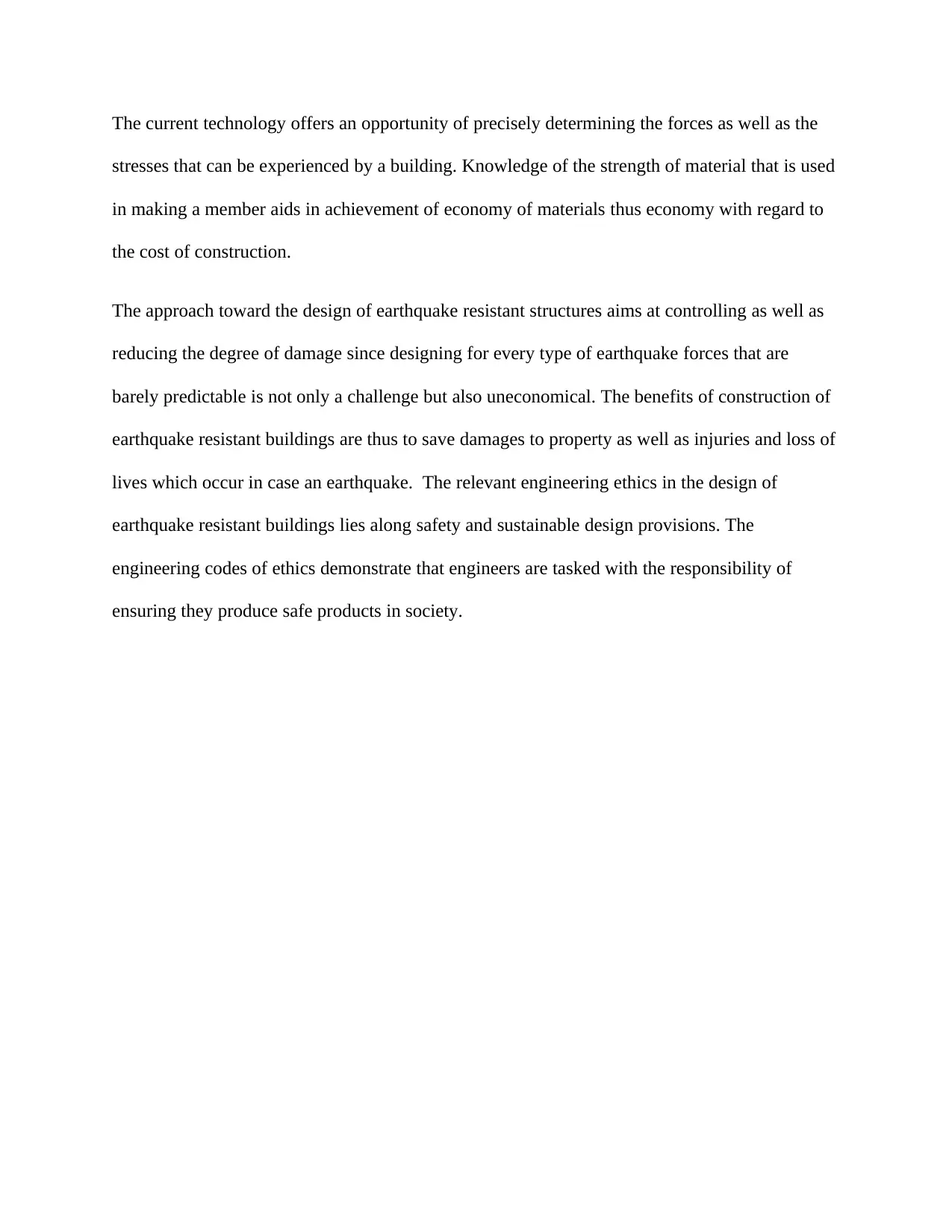Capstone Project: Earthquake Resistant Buildings Proposal Analysis
VerifiedAdded on 2023/04/25
|2
|464
|342
Project
AI Summary
This capstone proposal focuses on the analysis of earthquake-resistant buildings. It begins by highlighting the challenges and importance of constructing buildings that can withstand seismic activity, discussing the differences between load-bearing wall structures and framed structures, and their respective vulnerabilities during earthquakes. The proposal emphasizes the significance of material strength and engineering ethics in designing such structures, aiming to minimize damage, loss of life, and property. The project aims to evaluate the social impact of these buildings, considering factors such as safety, sustainability, and the role of engineering ethics. The document also underscores the importance of the proposal as a prerequisite for the final term paper, and the need to address the potential positive and negative social, cultural, environmental, and financial impacts associated with these designs.
1 out of 2








![[object Object]](/_next/static/media/star-bottom.7253800d.svg)